Dan Brown
Angels & Demons
A debt of gratitude to Emily Bestler, Jason Kaufman, Ben Kaplan, and everyone at Pocket Books for their belief in this project.
To my friend and agent, Jake Elwell, for his enthusiasm and unflagging effort.
To the legendary George Wieser, for convincing me to write novels.
To my dear friend Irv Sittler, for facilitating my audience with the Pope, secreting me into parts of Vatican City few ever see, and making my time in Rome unforgettable.
To one of the most ingenious and gifted artists alive, John Langdon, who rose brilliantly to my impossible challenge and created the ambigrams for this novel.
To Stan Planton, head librarian, Ohio University-Chillicothe, for being my number one source of information on countless topics.
To Sylvia Cavazzini, for her gracious tour through the secret Passetto .
And to the best parents a kid could hope for, Dick and Connie Brown… for everything.
Thanks also to CERN, Henry Beckett, Brett Trotter, the Pontifical Academy of Science, Brookhaven Institute, FermiLab Library, Olga Wieser, Don Ulsch of the National Security Institute, Caroline H. Thompson at University of Wales, Kathryn Gerhard and Omar Al Kindi, John Pike and the Federation of American Scientists, Heimlich Viserholder, Corinna and Davis Hammond, Aizaz Ali, the Galileo Project of Rice University, Julie Lynn and Charlie Ryan at Mockingbird Pictures, Gary Goldstein, Dave (Vilas) Arnold and Andra Crawford, the GlobalFraternal Network, the Phillips Exeter Academy Library, Jim Barrington, John Maier, the exceptionally keen eye of Margie Wachtel, alt.masonic.members, Alan Wooley, the Library of Congress Vatican Codices Exhibit, Lisa Callamaro and the Callamaro Agency, Jon A. Stowell, Musei Vaticani, Aldo Baggia, Noah Alireza, Harriet Walker, Charles Terry, Micron Electronics, Mindy Homan, Nancy andDick Curtin, Thomas D. Nadeau, NuvoMedia andRocket E-books, Frank and Sylvia Kennedy, Rome Board of Tourism, Maestro GregoryBrown, Val Brown, Werner Brandes, Paul Krupin at Direct Contact, Paul Stark, Tom King at Computalk Network, Sandy and Jerry Nolan, Web guru Linda George, the National Academy of Art in Rome, physicist and fellow scribe Steve Howe, Robert Weston, the Water Street Bookstore in Exeter, New Hampshire, and the Vatican Observatory.
The world’s largest scientific research facility—Switzerland’s Conseil Européen pour la Recherche Nucléaire (CERN)—recently succeeded in producing the first particles of antimatter. Antimatter is identical to physical matter except that it is composed of particles whose electric charges are opposite to those found in normal matter.
Antimatter is the most powerful energy source known to man. It releases energy with 100 percent efficiency (nuclear fission is 1.5 percent efficient). Antimatter creates no pollution or radiation, and a droplet could power New York City for a full day.
There is, however, one catch…
Antimatter is highly unstable. It ignites when it comes in contact with absolutely anything… even air. A single gram of antimatter contains the energy of a 20-kiloton nuclear bomb—the size of the bomb dropped on Hiroshima.
Until recently antimatter has been created only in very small amounts (a few atoms at a time). But CERN has now broken ground on its new Antiproton Decelerator—an advanced antimatter production facility that promises to create antimatter in much larger quantities.
One question looms: Will this highly volatile substance save the world, or will it be used to create the most deadly weapon ever made?
References to all works of art, tombs, tunnels, and architecture in Rome are entirely factual (as are their exact locations). They can still be seen today.
The brotherhood of the Illuminati is also factual.
Physicist Leonardo Vetra smelled burning flesh, and he knew it was his own. He stared up in terror at the dark figure looming over him. "What do you want!"
" La chiave ," the raspy voice replied. "The password."
"But… I don’t—"
The intruder pressed down again, grinding the white hot object deeper into Vetra’s chest. There was the hiss of broiling flesh.
Vetra cried out in agony. "There is no password!" He felt himself drifting toward unconsciousness.
The figure glared. " Ne avevo paura . I was afraid of that."
Vetra fought to keep his senses, but the darkness was closing in. His only solace was in knowing his attacker would never obtain what he had come for. A moment later, however, the figure produced a blade and brought it to Vetra’s face. The blade hovered. Carefully. Surgically.
"For the love of God!" Vetra screamed. But it was too late.
High atop the steps of the Pyramid of Giza a young woman laughed and called down to him. "Robert, hurry up! I knew I should have married a younger man!" Her smile was magic.
He struggled to keep up, but his legs felt like stone. "Wait," he begged. "Please…"
As he climbed, his vision began to blur. There was a thundering in his ears. I must reach her! But when he looked up again, the woman had disappeared. In her place stood an old man with rotting teeth. The man stared down, curling his lips into a lonely grimace. Then he let out a scream of anguish that resounded across the desert.
Robert Langdon awoke with a start from his nightmare. The phone beside his bed was ringing. Dazed, he picked up the receiver.
"Hello?"
"I’m looking for Robert Langdon," a man’s voice said.
Langdon sat up in his empty bed and tried to clear his mind. "This… is Robert Langdon." He squinted at his digital clock. It was 5:18 A.M.
"I must see you immediately."
"Who is this?"
"My name is Maximilian Kohler. I’m a discrete particle physicist."
"A what ?" Langdon could barely focus. "Are you sure you’ve got the right Langdon?"
"You’re a professor of religious iconology at Harvard University. You’ve written three books on symbology and—"
"Do you know what time it is?"
"I apologize. I have something you need to see. I can’t discuss it on the phone."
A knowing groan escaped Langdon’s lips. This had happened before. One of the perils of writing books about religious symbology was the calls from religious zealots who wanted him to confirm their latest sign from God. Last month a stripper from Oklahoma had promised Langdon the best sex of his life if he would fly down and verify the authenticity of a cruciform that had magically appeared on her bed sheets. The Shroud of Tulsa , Langdon had called it.
"How did you get my number?" Langdon tried to be polite, despite the hour.
"On the Worldwide Web. The site for your book."
Langdon frowned. He was damn sure his book’s site did not include his home phone number. The man was obviously lying.
"I need to see you," the caller insisted. "I’ll pay you well."
Now Langdon was getting mad. "I’m sorry, but I really—"
"If you leave immediately, you can be here by—"
"I’m not going anywhere! It’s five o’clock in the morning!" Langdon hung up and collapsed back in bed. He closed his eyes and tried to fall back asleep. It was no use. The dream was emblazoned in his mind. Reluctantly, he put on his robe and went downstairs.
Robert Langdon wandered barefoot through his deserted Massachusetts Victorian home and nursed his ritual insomnia remedy—a mug of steaming Nestlé’s Quik. The April moon filtered through the bay windows and played on the oriental carpets. Langdon’s colleagues often joked that his place looked more like an anthropology museum than a home. His shelves were packed with religious artifacts from around the world—an ekuaba from Ghana, a gold cross from Spain, a cycladic idol from the Aegean, and even a rare woven boccus from Borneo, a young warrior’s symbol of perpetual youth.
Читать дальше
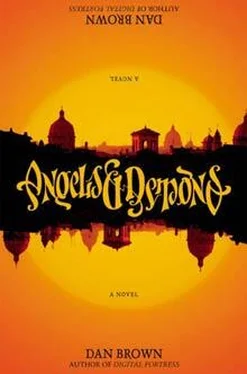
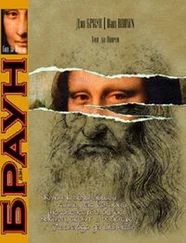
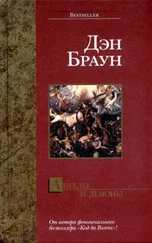
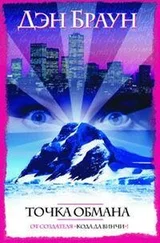
![Дэн Браун - Код да Вінчі [підліткова версія]](/books/30893/den-braun-kod-da-vІnchІ-pІdlІtkova-versІya-thumb.webp)
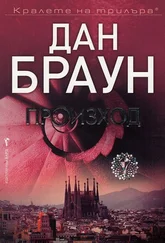


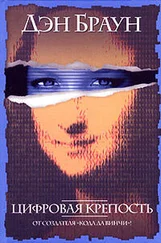
![Дэн Браун - Код да Винчи [litres]](/books/433567/den-braun-kod-da-vinchi-litres-thumb.webp)